THE SPITE HOUSE OF MELROSE AVENUE (1899)
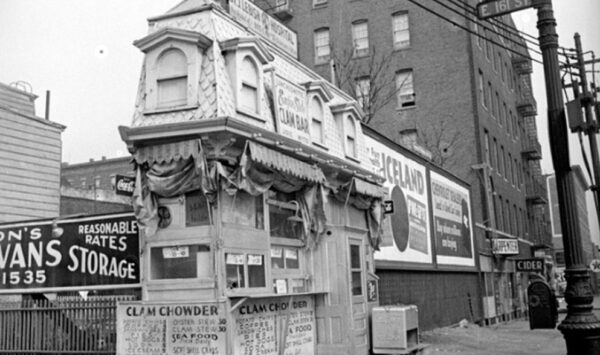
******************************************************************************************************************************** Brownstone Detectives investigates the history of our clients’ homes. The story you are about to read was composed from research conducted in the course of one of those investigations. Do you know the history of YOUR house? ******************************************************************************************************************************** Around the turn of the last century, Melrose Avenue in the Bronx was widened. The land that the city needed to perform this expansion was purchased from private owners. In some cases, however, it left some very-difficult-to-build-on lots. Such was the case with a lot on the corner of East 161st Street and Melrose Avenue. From The Strand Magazine, 1899. “This odd building stood on the corner of 161st Street and Melrose Avenue, New York City. It was a bit over 4ft. in depth, 17ft. frontage, and one and a-half storeys high, with a basement and sub-basement built under the broad sidewalk, extending to the curb. The house itself was of wood, on a steel frame, and had a slate roof. “Its owner was an eccentric tailor, who lived and carried on his trade below the street. The interior consisted of a small show-room, a store-room, and spiral iron stairway going down to the ‘lower regions.’ “The upper storey seems to have been constructed merely as a finishing touch. It was reached by an iron ladder from the store-room. The entire construction, appointments, and fittings were very ingenious, and were all the ideas of the owner. “The story of the house was that the original lot was cut away in opening […]
“DR. SEUSS” ON A CLINTON HILL BROWNSTONE
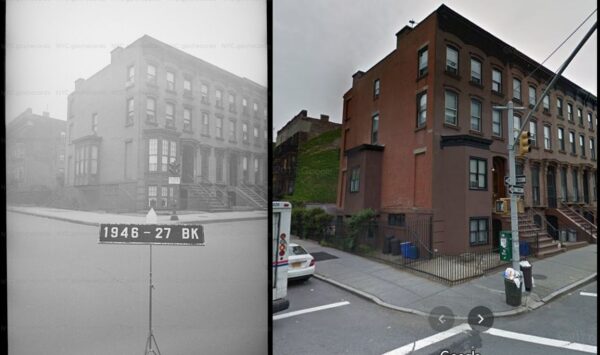
******************************************************************************************************************************** Brownstone Detectives investigates the history of our clients’ homes. The story you are about to read was composed from research conducted in the course of one of those investigations. ******************************************************************************************************************************** What happened here, It is not clear. Some window bays Have lost their glaze. I wonder why They had to nix it. For it wern’t broke, So t’wern’t to fix it. – Dr. Seuss, on the bay windows of No. 280 Lafayette Ave, Clinton Hill, Brooklyn. Follow @BrownstoneDetec Share ———————————————————————————————————————– The Brownstone Detectives Brownstone Detectives is a property research agency. Our mission is to research, document, and save the histories of our clients’ historic properties. From this research, we produce our celebrated House History Books. Each book is fully cited, featuring detailed narratives and colorful graphics, and is designed to bring the history of any house to life. Contact us today to begin discovering the history of your home.
THE PAINTED LADY OF SACKETT STREET (1958)
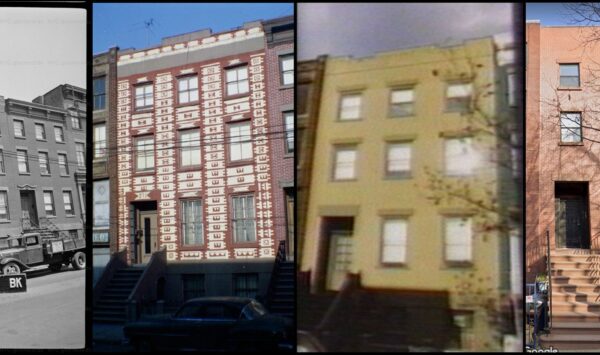
******************************************************************************************************************************** Brownstone Detectives investigates the history of our clients’ homes. The story you are about to read was composed from research conducted in the course of one of those investigations. Do you know the history of YOUR house? ******************************************************************************************************************************** Houses as old as the historic brownstones of New York City have had a lot of time to experience change – change of ownership, change of status, as well as physical change. Much of that change often occurs on the inside of these buildings as their occupancy type changes. The most prevalent change of this type that occurs over time is the change of a property from a single family house to a mutiple dwelling or boarding house. Just outside the Cobble Hill Historic District, sits a much-altered brownstone on Sackett Street between Court and Clinton Streets, No. 275. Constructed pre-1855 as a one-family house it would experience many change over the years. Its original address was No. 160. Its original owner appears to have been William H Perry, a stock broker on Wall Street. By the 1860s, the Forsyth family lived in the Sackett Street rowhouse. Orlando Forsyth was a jeweler who, in the 1840s, had had a showroom on Fulton Street at No. 99. The house would begin taking boarders in the 1870s, continuing at least through most of the 20th century. THE LADY GETS A FACELIFT At face, however, the physical changes of No. 275 seem to be the most striking. While, in its original state, it resembled […]
MR. DINKINS’ BULGING FACADE (1977)
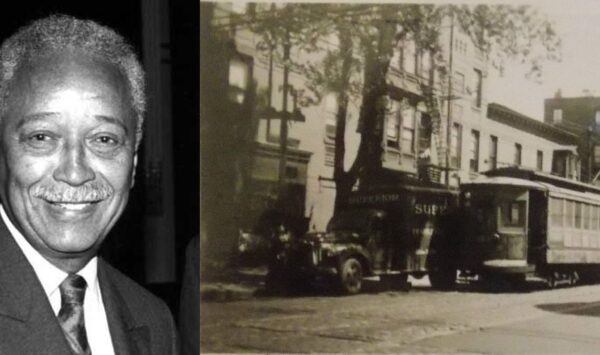
******************************************************************************************************************************** Brownstone Detectives investigates the history of our clients’ homes. The story you are about to read was composed from research conducted in the course of one of those investigations. Do you know the history of YOUR house? ******************************************************************************************************************************** Have you ever wondered what once filled those large lots at the corners of Halsey Street and Ralph Avenue? Every house has a history. You know it is there, but the clouds of the past work to obfuscate the present. Uncovering that history takes some detective work, but with a little time and some gumshoe sleuthing, the answers can be discovered. With regard to 774 Halsey Street – what do we know happened? A fire? Decay? Gas explosion? What do we know about the life of the building? What was it used for? Who owned the building and who lived there? We looked to clues from newspaper archives, fire insurance maps, and physical evidence to unravel that history. This is our report: WHAT HAPPENED to 774? A 4-story brick apartment building – 774 Halsey Street – sat on the southeast corner of the Halsey/Ralph intersection. It had a commercial space on the ground floor facing Halsey Street and one at the rear of the building at 153 Ralph Avenue. The building housed a number of apartments the addresses/entrances of which were on the Ralph side of the building at 149 Ralph Avenue. The apartments of the Ralph-facing side of the building had stacked bay windows, one on each floor. South of […]
HOW ART DECO CAME TO PARK SLOPE (1931)
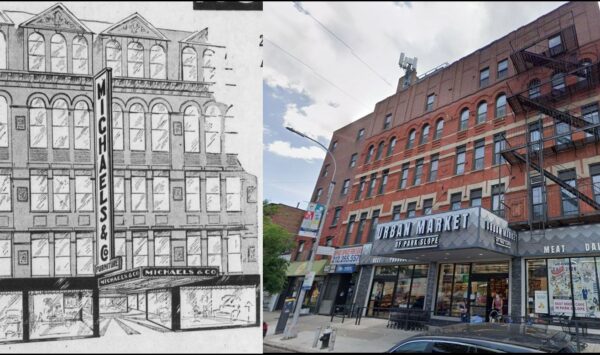
******************************************************************************************************************************* Brownstone Detectives investigates the history of our clients’ homes. The story you are about to read was composed from research conducted in the course of one of those investigations. Do you know the history of YOUR house? *******************************************************************************************************************************Up until the 1930s, everything in Park Slope was Victorian brownstone. But then came Michael’s and the revelation of a stunning Art Deco facelift. ART DECO IN THE HOUSE For those of you familiar with 5th Avenue in Brooklyn, you may be acquainted with the 5-story building with storefronts known as Nos. 503-505. Currently housing Urban Market of Park Slope, the entire floor was at one time taken over with bedroom sets, kitchen tables, and dinettes – a furniture store known as Michael’s & Co. Originally, the building – sitting between 12th and 13th streets – had quite a different look – a product of the Queen Anne/Romanesque architectural period in the late 1800s, its top floor was lined with faux gables and a mansard roof. By the 1930s, a vertical sign and a marquee had been added to the facade, both with the Michael’s name. Today, of course, Michael’s is no more and all of the Victorian architectural features toward the top of the building (as well as the Michael’s signs) have been removed – probably as much out of an extreme aversion to the cost of maintaining such a facade as due to some of extreme economic periods the building’s passed through. Nonetheless, its current facade is rather unremarkable, particularly […]
ANALYZING A QUINCY STREET VICTORIAN (1902)
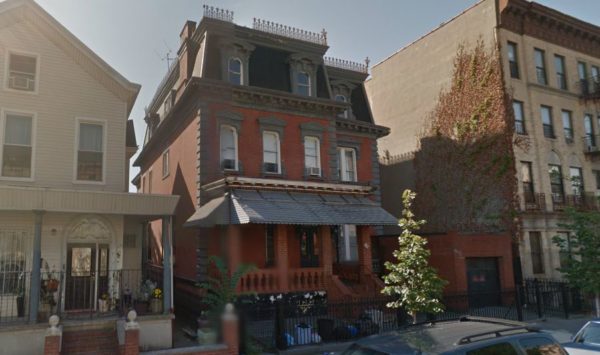
******************************************************************************************************************************** Brownstone Detectives investigates the history of our clients’ homes. The story you are about to read was composed from research conducted in the course of one of those investigations. ******************************************************************************************************************************** In 1902, Quincy Street, between Bedford and Nostrand avenues, had become a leader in the Bedford District in block beautification initiatives. A forerunner to the Greenest Block campaign that would come 70 years later, the campaign in 1902 would be called “Block Beautiful.” Because the campaign had become so popular that year, this block of Quincy Street would have a number of pictures of its houses published in the Brooklyn Daily Eagle. Here we have three shots of 186 Quincy Street – the home of Daniel Winant (a dealer in hotel and steamship food supplies) – which the Eagle called “the old Joseph C. Hoagland residence.” It was, they noted, a “double mansion of red brick, with a large lawn on one side, one of the finest of Hill residences.” So apparently, even back then, Clinton Hill was encroaching upon the Bedford section. 😉 The first picture, above, is a Google Maps northwest facing view of the house is from 2014; that is followed below by two more shots – a newspaper photograph from 1902, and then, another Google Maps shot from 2016. WHAT DIFFERENCES DO YOU NOTICE BETWEEN THE FOLLOWING TWO PICS!?!? Follow @brownstonedetec Share ———————————————————————————————————————– The Brownstone Detectives Brownstone Detectives is an historic property research agency. Our mission is to document and save the histories of our […]
THE CHANGING FACE OF A STOOP (1921)
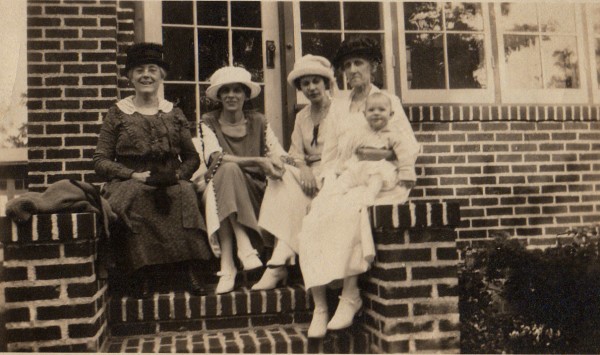
******************************************************************************************************************************** Brownstone Detectives investigates the history of our clients’ homes. The story you are about to read was composed from research conducted in the course of one of those investigations. Do you know the history of YOUR house? ******************************************************************************************************************************** In 1921, the Nilsen family purchased their Bay Ridge home at 8719 Colonial Road. Immediately, it seems, they began to document a lifelong record of their family’s generations, all surrounding one of the more iconic features attached to a Brooklyn home – their stoop. With a fascinating collection of photographs arranged in a chronological order, Bonnie Nilsen – whose father, Frank, is in most of the photographs – laid out her family’s record of life on the stoop of the original Nilsen family home. (The original record – along with Bonnie’s other photographs – can be seen at her website, BonnieNilsen.com.) In the meantime, though, we’d like to share a few of the more “stoop-central” photographs below. (See if you can spot the changes over the years.) Follow @BrownstoneDetec Share ———————————————————————————————————————– The Brownstone Detectives Brownstone Detectives is an historic property research agency. Our mission is to document and save the histories of our clients’ homes. From our research, we produce our celebrated House History Books and House History Reports. Contact us today to begin discovering the history of your home.
“BLOWN TO PIECES” ON MACON STREET (1916)
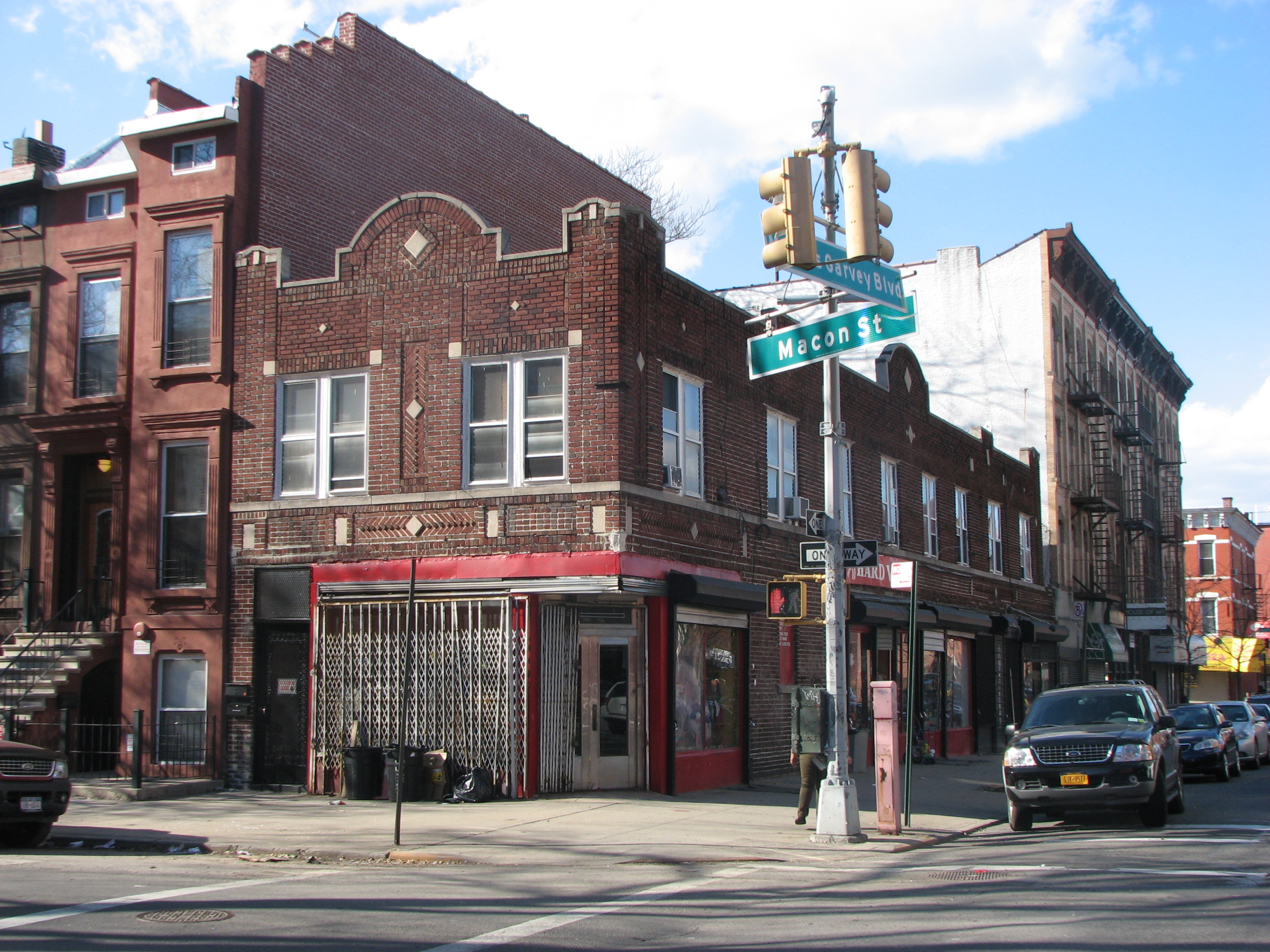
******************************************************************************************************************************** Brownstone Detectives investigates the history of our clients’ homes. The story you are about to read was composed from research conducted in the course of one of those investigations. Do you know the history of YOUR house? ******************************************************************************************************************************** On a warm summer morning in 1916, five people were killed and “more than a score were injured” when a masonry building on Macon Street was “blown to pieces” in a gas “explosion” occurring shortly after most of the building’s inhabitants had left for work for the day. Authorities were still attempting to determine who may have been in the building at the time of the blast, but the source of the explosion was believed to be a gas leak from the cellar of the building. THAT WAS THEN, THIS IS NOW This story was written more than 100 years ago, in 1916. The explosion, which fractured many Brooklyn lives, took place in the middle of Stuyvesant Heights at the corner of Macon Street and Sumner Avenue (now Marcus Garvey). Similar in detail to the East Village gas explosion of a few years back, only the time and place has changed. Both the buildings were residential with stores on the ground levels, and the 1916 explosion, itself, was also caused by a gas leak. Apparently, gas leaks have been leveling buildings since buildings were being plumbed with the element. In 2015’s explosion, the gas in the building was used for heating the apartments and the building’s water. In 1916, the gas […]
THE CRUMBLING OF MACON & MALCOLM
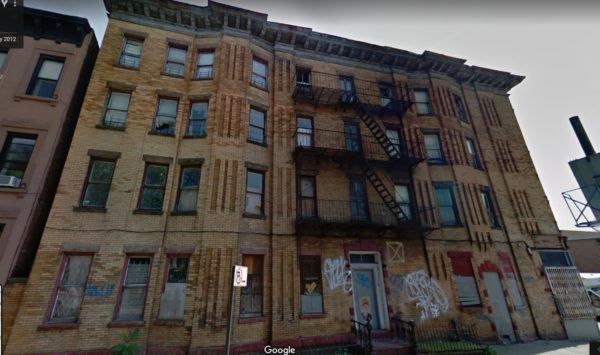
******************************************************************************************************************************** Brownstone Detectives investigates the history of our clients’ homes. The story you are about to read was composed from research conducted in the course of one of those investigations. Do you know the history of YOUR house? ******************************************************************************************************************************** (This post has been updated as of 8 February 2021.) The apartment building at the corner of Malcolm X Boulevard and Macon Street, No. 265 Malcolm X Blvd/546 Macon Street, which was constructed ca. the 1890s, has experienced an increased deterioration in the past 20 years. Although we don’t have a current snapshot of the building, the Department of Buildings notes that there is a sidewalk shed there, the existence of which was likely due to a failure to maintain building (i.e., falling glass, mortar, cornice, &c.). The building is currently owned by the Mission Field Church. The property has 12 complaints and 33 open violations. See in pictures how the structure has deteriorated over just the past ten years. Follow @BrownstoneDetec Share ———————————————————————————————————————– The Brownstone Detectives Brownstone Detectives is an historic property research agency. Our mission is to document and save the histories of our clients’ homes. From our research, we produce our celebrated House History Books and House History Reports. Contact us today to begin discovering the history of your home.
WHEN BROOKLYN WAS (PRE-) FAB (1946)
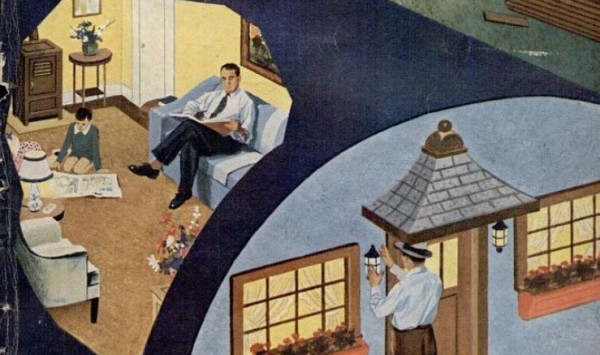
******************************************************************************************************************************** Brownstone Detectives investigates the history of our clients’ homes. The story you are about to read was composed from research conducted in the course of one of those investigations. Do you know the history of YOUR house? ******************************************************************************************************************************** When Johnny came marching home again – he found a housing shortage. As World War II ended right on the tail end of the Depression, the City of New York realized it had a crisis on its hands. Relatively little housing had been built in the previous 15 years and suddenly, with the war winding down, veterans would be returning en masse to a “smaller” city. Robert Moses proposed the temporary solution that seemed to perfectly address the veteran housing shortage – quonset huts. Servicemen would certainly be familiar with them – those curved corrugated “shacks” so familiar to the boys who fought in the Pacific. Used there as quickly built administrative offices and barracks, they were the solution for an army “on-the-go.” But would veterans want to live in them – again? BROOKLYN’S HUTS GO UP In Brooklyn, after much heated debate as to what to build, where, and for how much, acres of land in Canarsie, Jamaica Bay, and the area along the Belt Parkway in the south of Brooklyn, were all selected upon which to build temporary public housing in the form of the Federal surplus quonset huts. These structures, with their curved, corrugated roofs, potbellied stoves in each living room for heat, and a common ground between […]